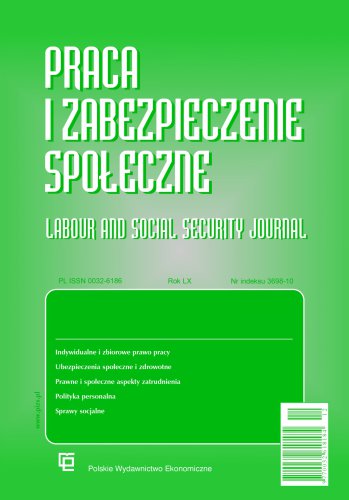Labour and Social Security Journal 3/2020
ISSN: 0032-6186
Pages: 60
Publication date: 2020
Place publication: Warszawa
Binding: paperback
Format: A4
Publication date: 2020
Place publication: Warszawa
Binding: paperback
Format: A4
DOI: 10.33226/0032-6186.2020.3.1
JEL: K2; M1; O3, O4
DOI: 10.33226/0032-6186.2020.3.2
JEL: K31
DOI: 10.33226/0032-6186.2020.3.3
JEL: K31
DOI: 10.33226/0032-6186.2020.3.4
JEL: K23, K31
DOI: 10.33226/0032-6186.2020.3.5
JEL: K31, (artykuł w języku angielskim)
DOI: 10.33226/0032-6186.2020.3.6
JEL: K31
DOI: 10.33226/0032-6186.2020.3.7
JEL: K31
DOI: 10.33226/0032-6186.2020.3.8
JEL: K31
DOI: 10.33226/0032-6186.2020.3.9
JEL: K31
| Odbiór osobisty | 0 € |
| Kurier Inpost | 4 € |
| Kurier FedEX | 4 € |
| Inpost Paczkomaty | 4 € |
| Free delivery in Reader's Club | from 47 € |

